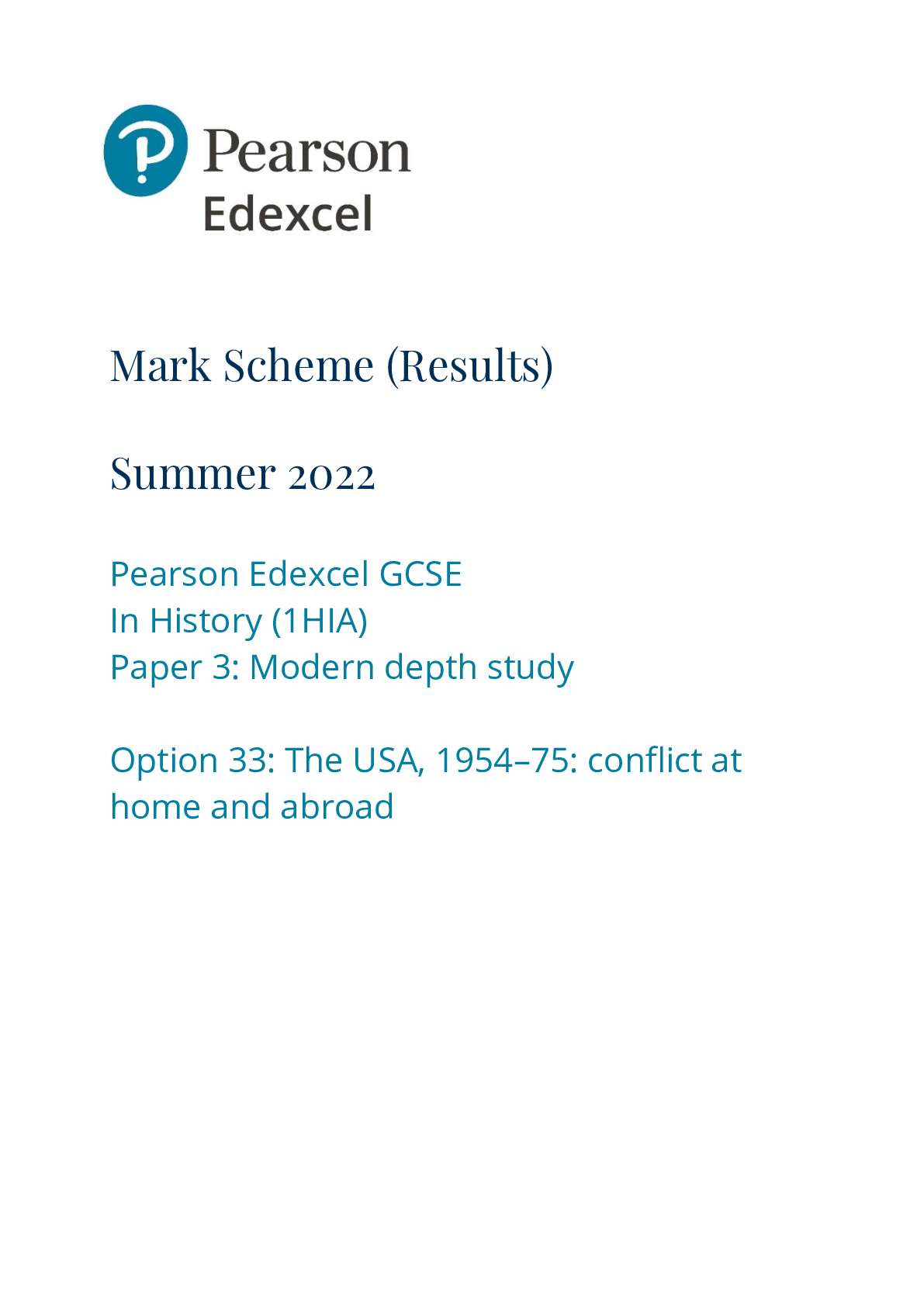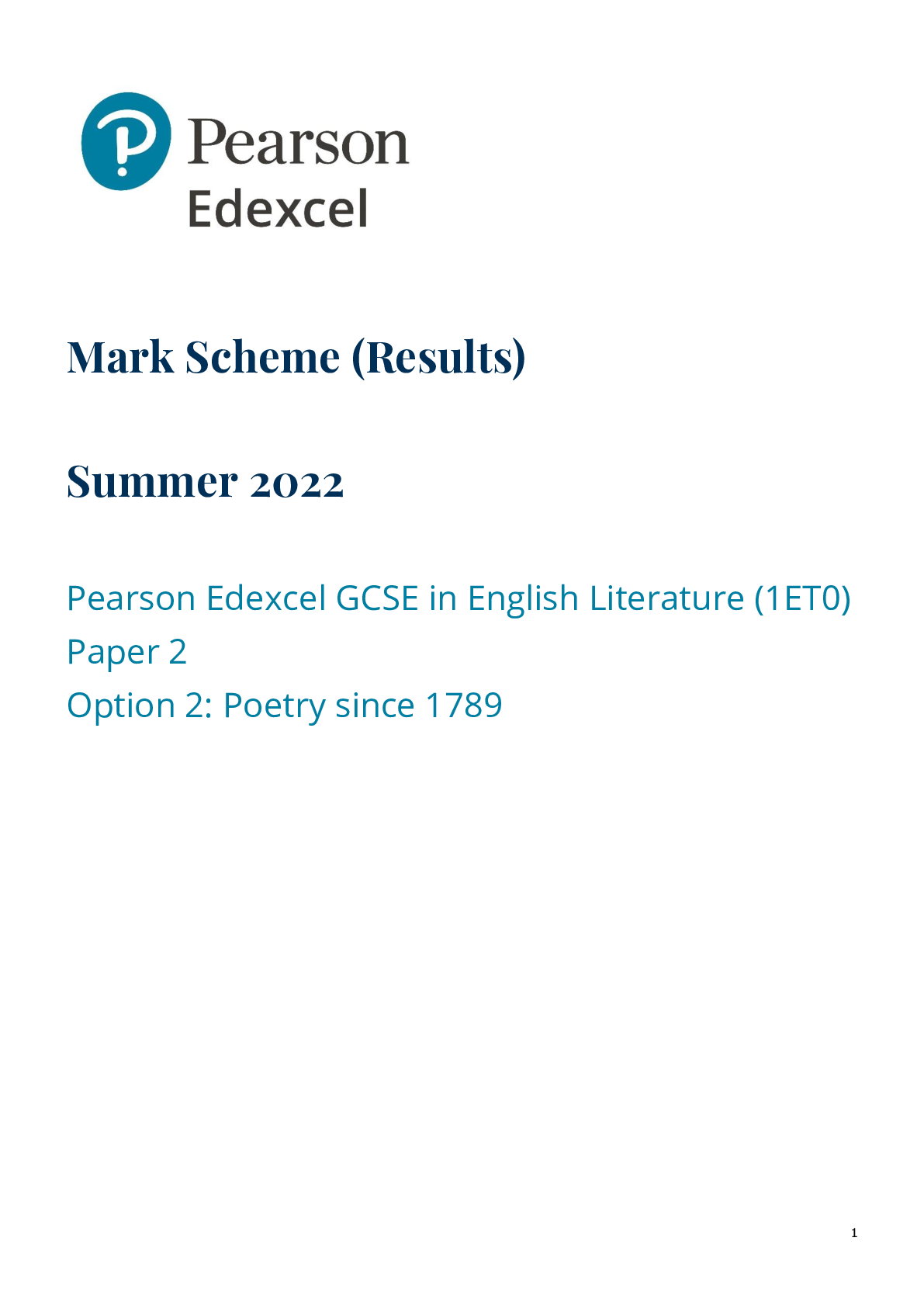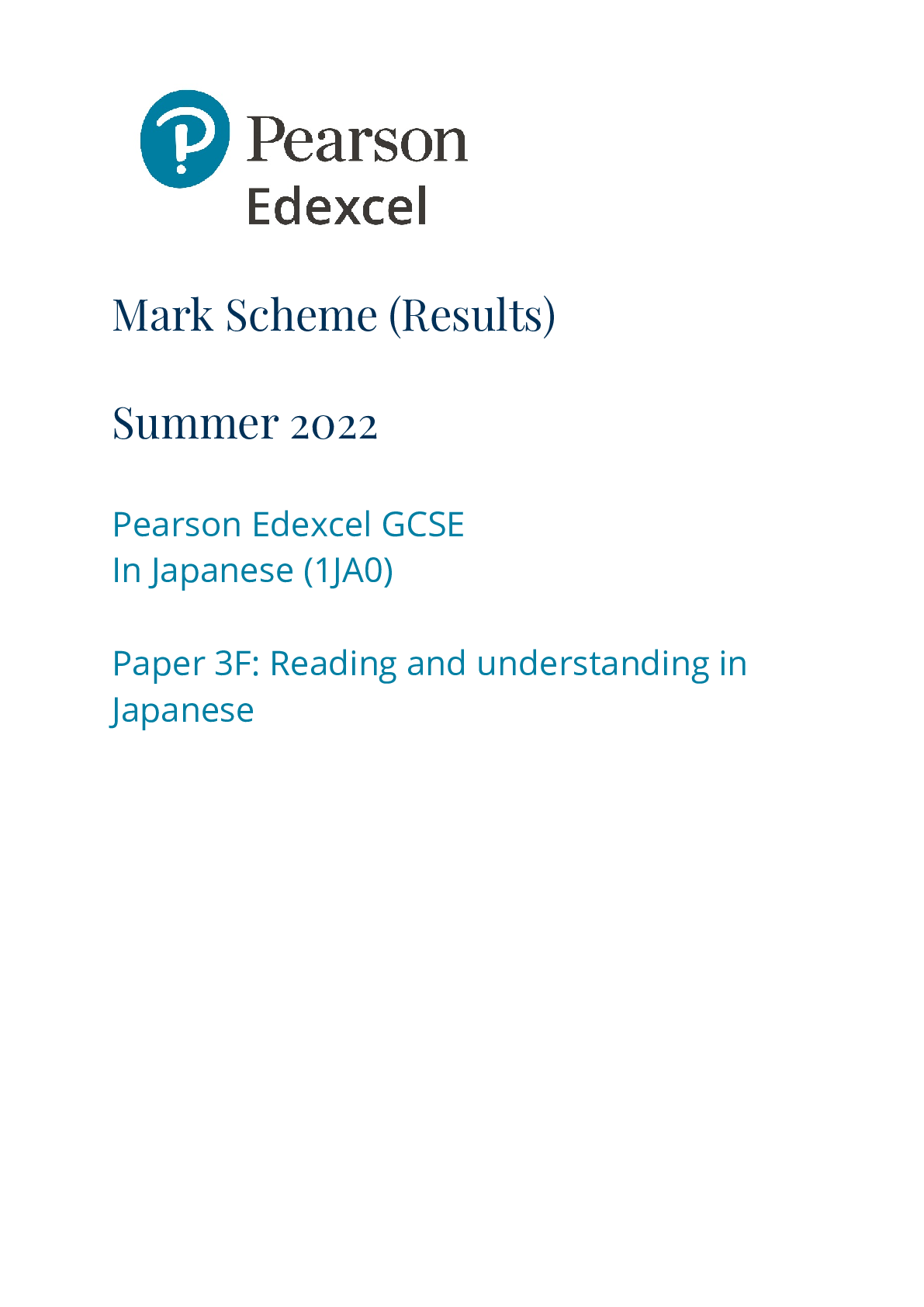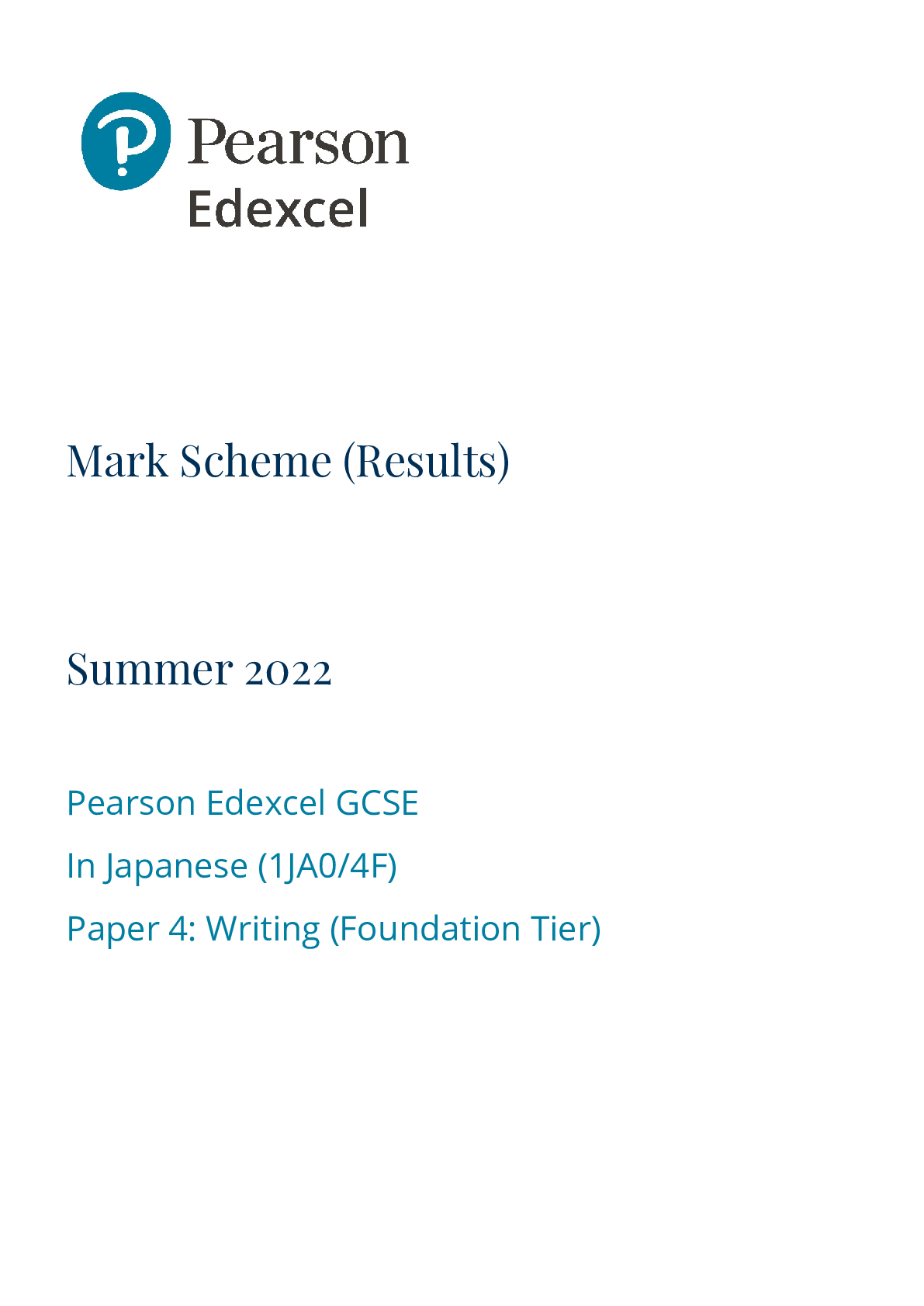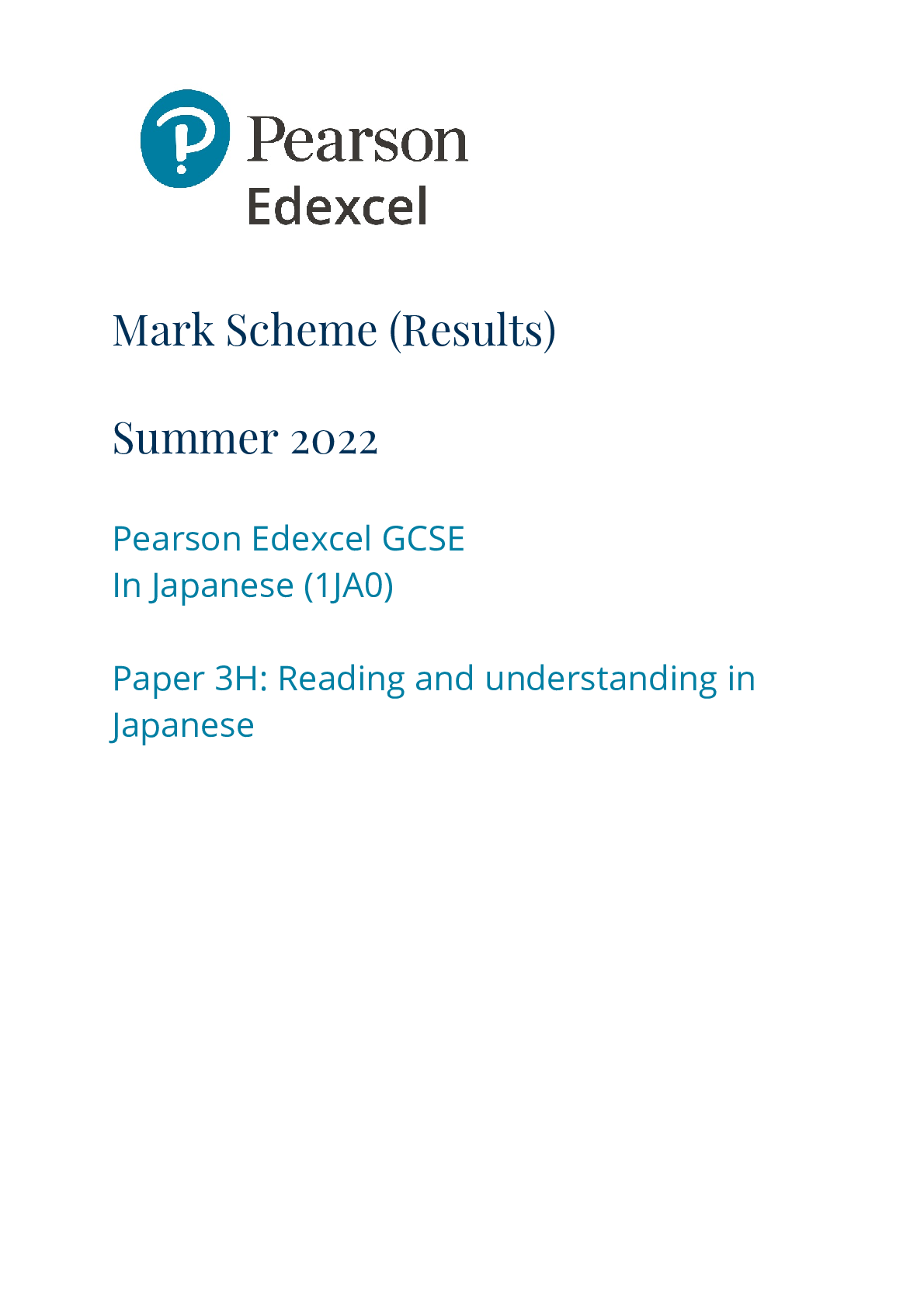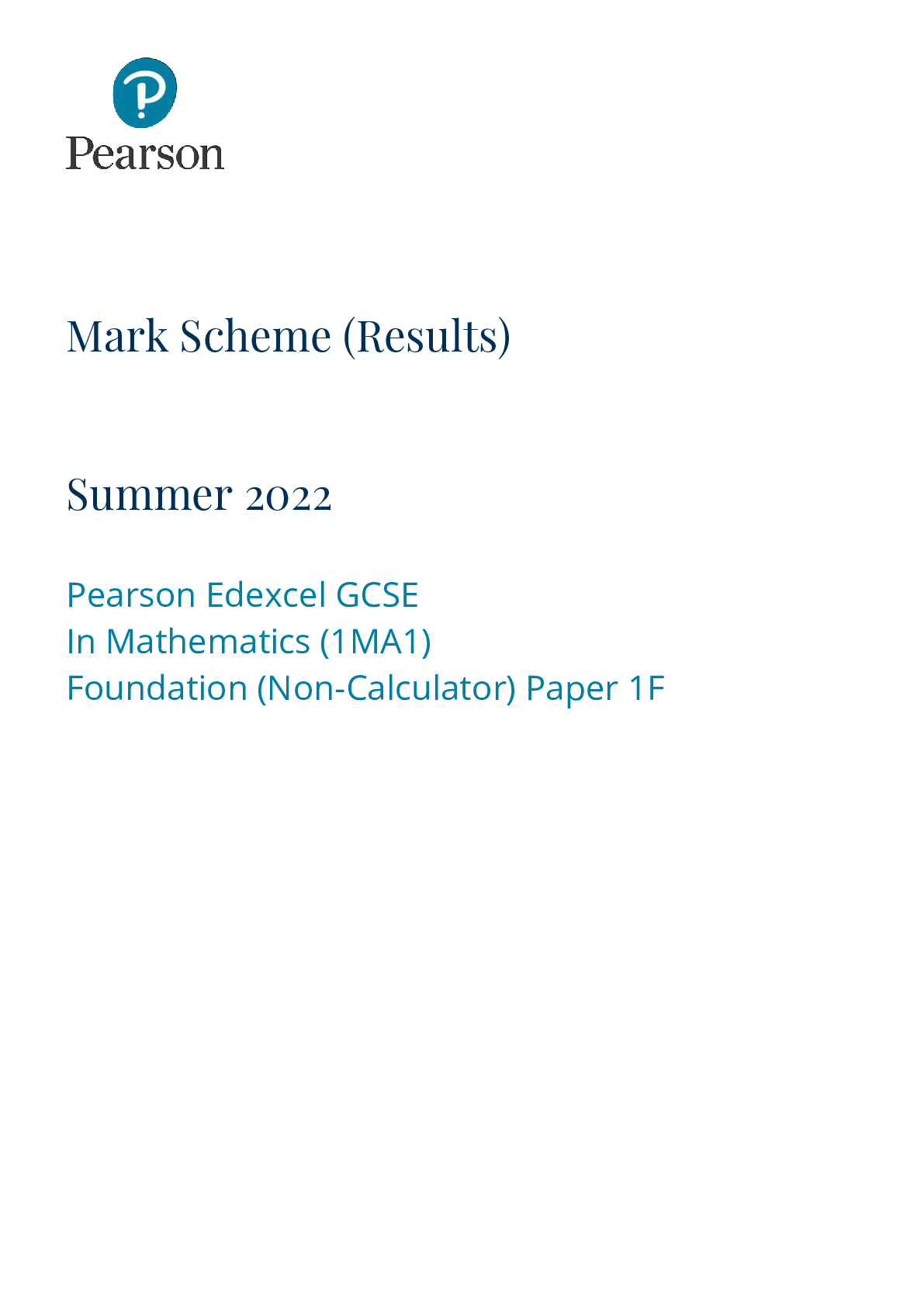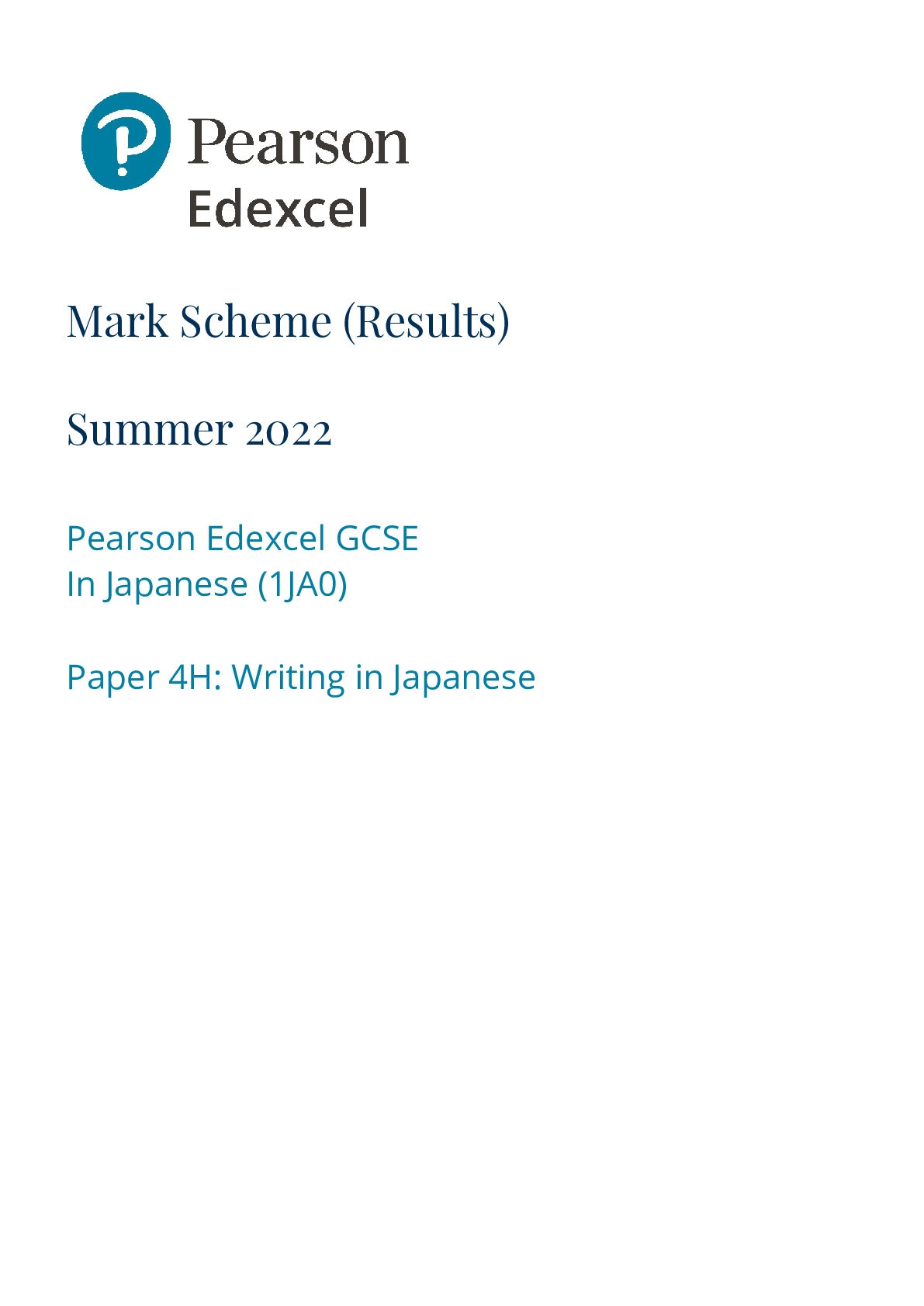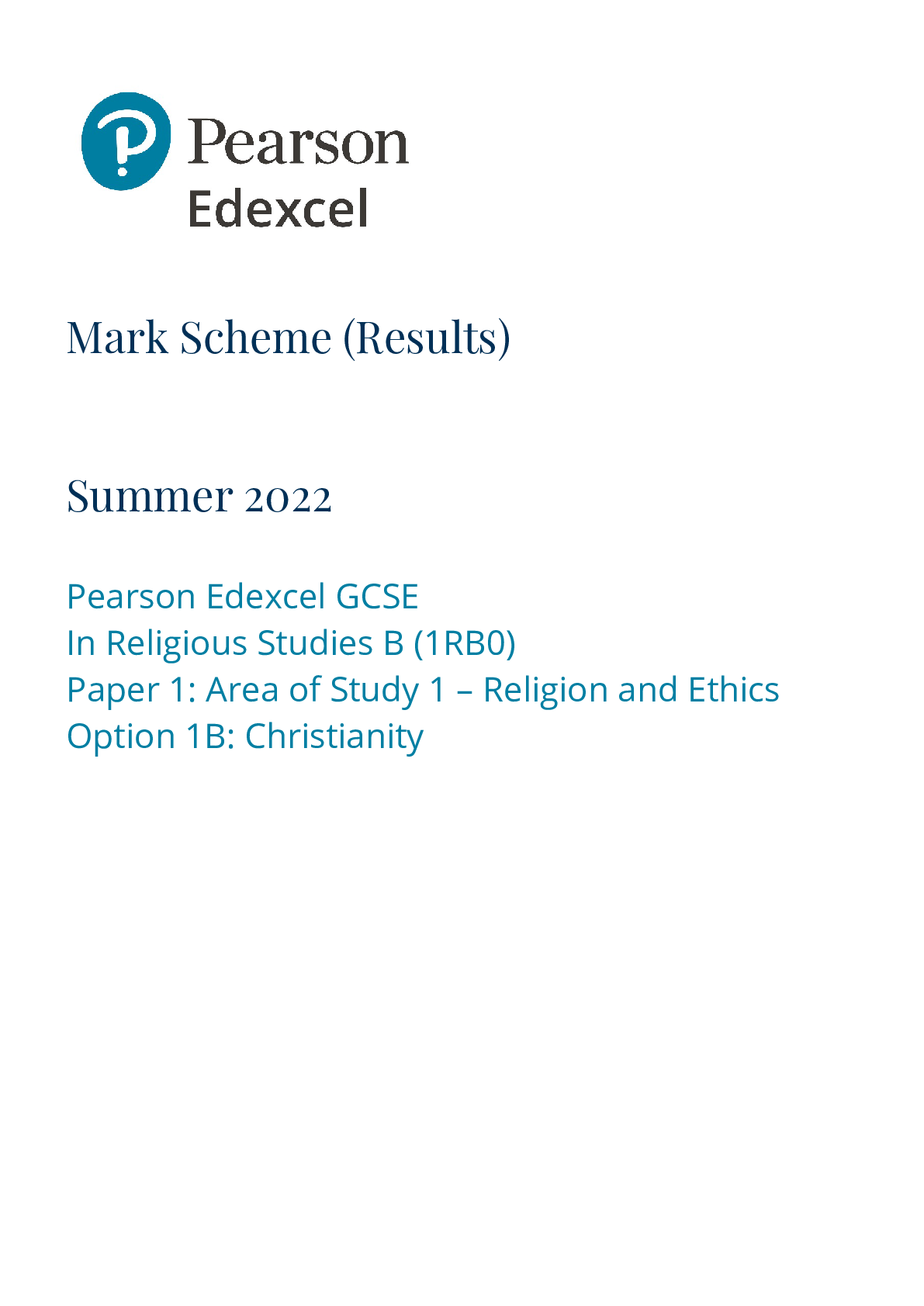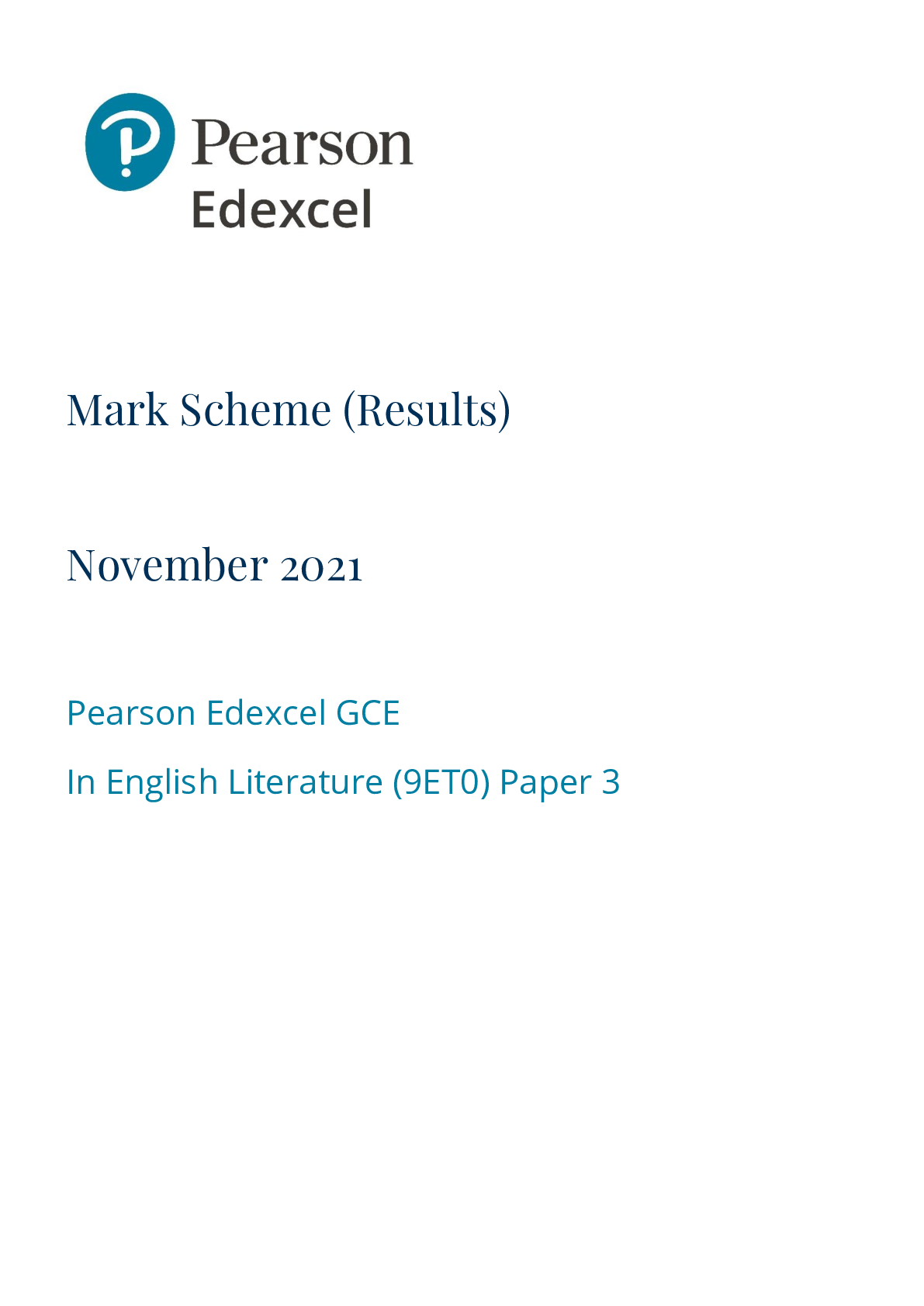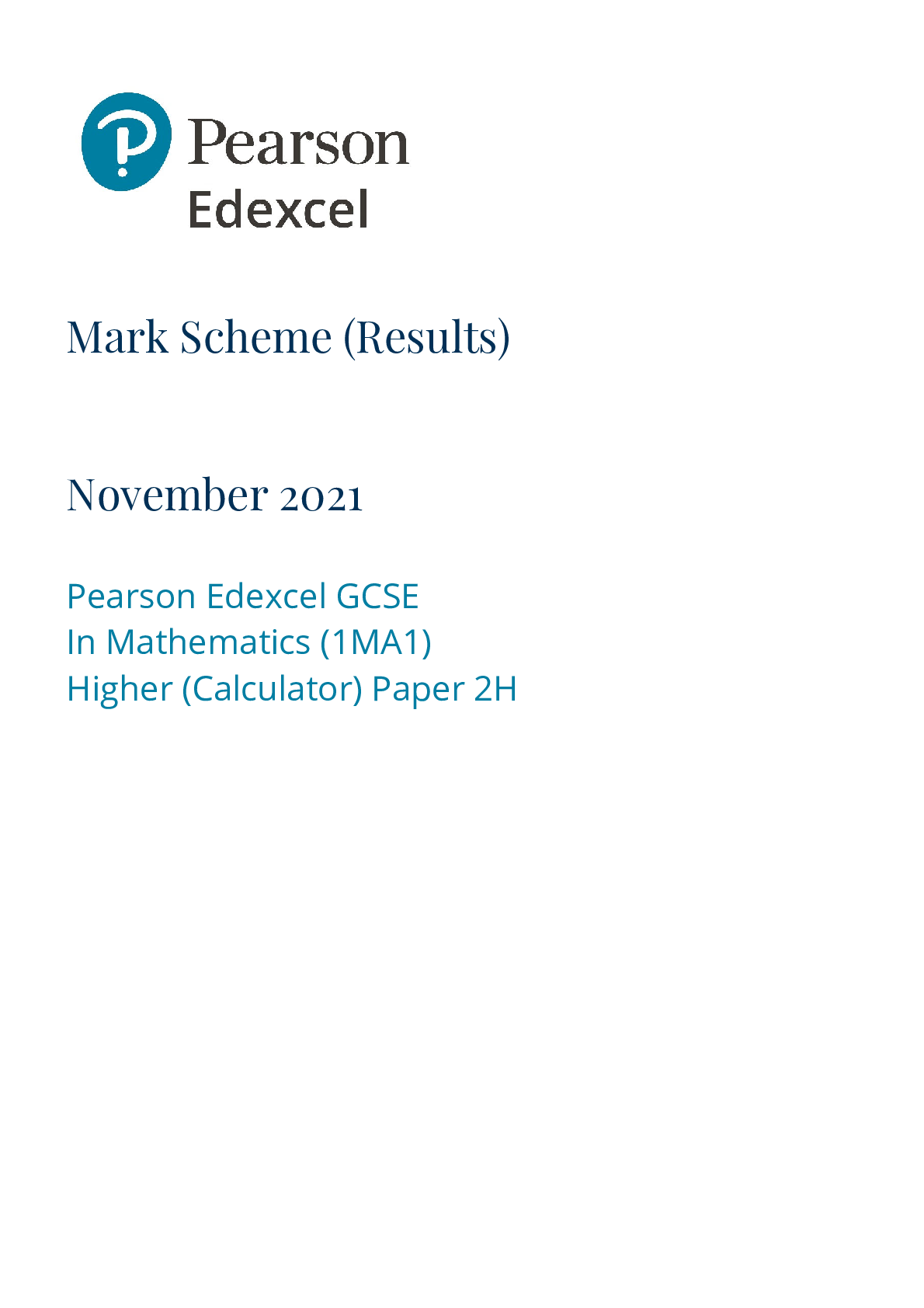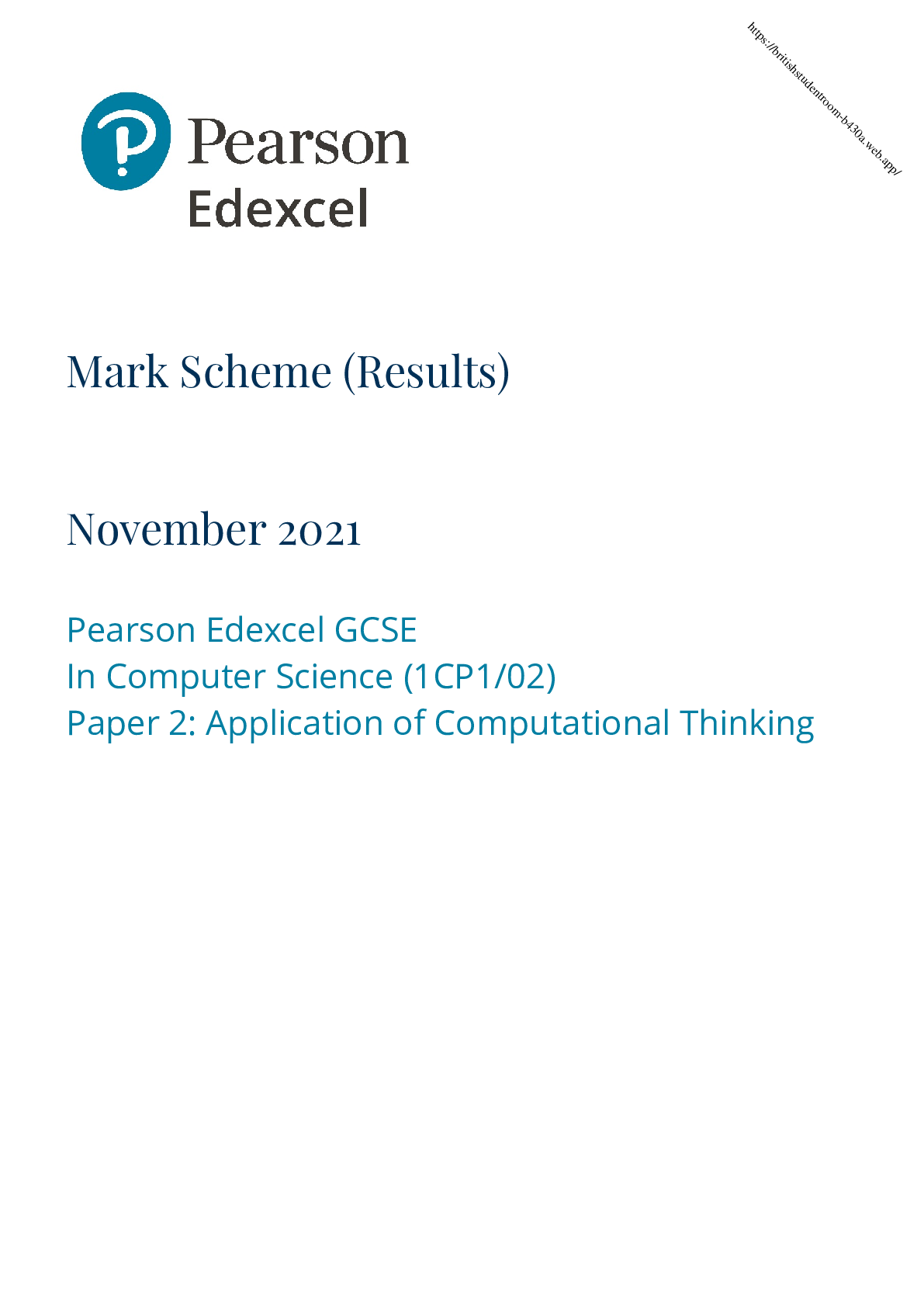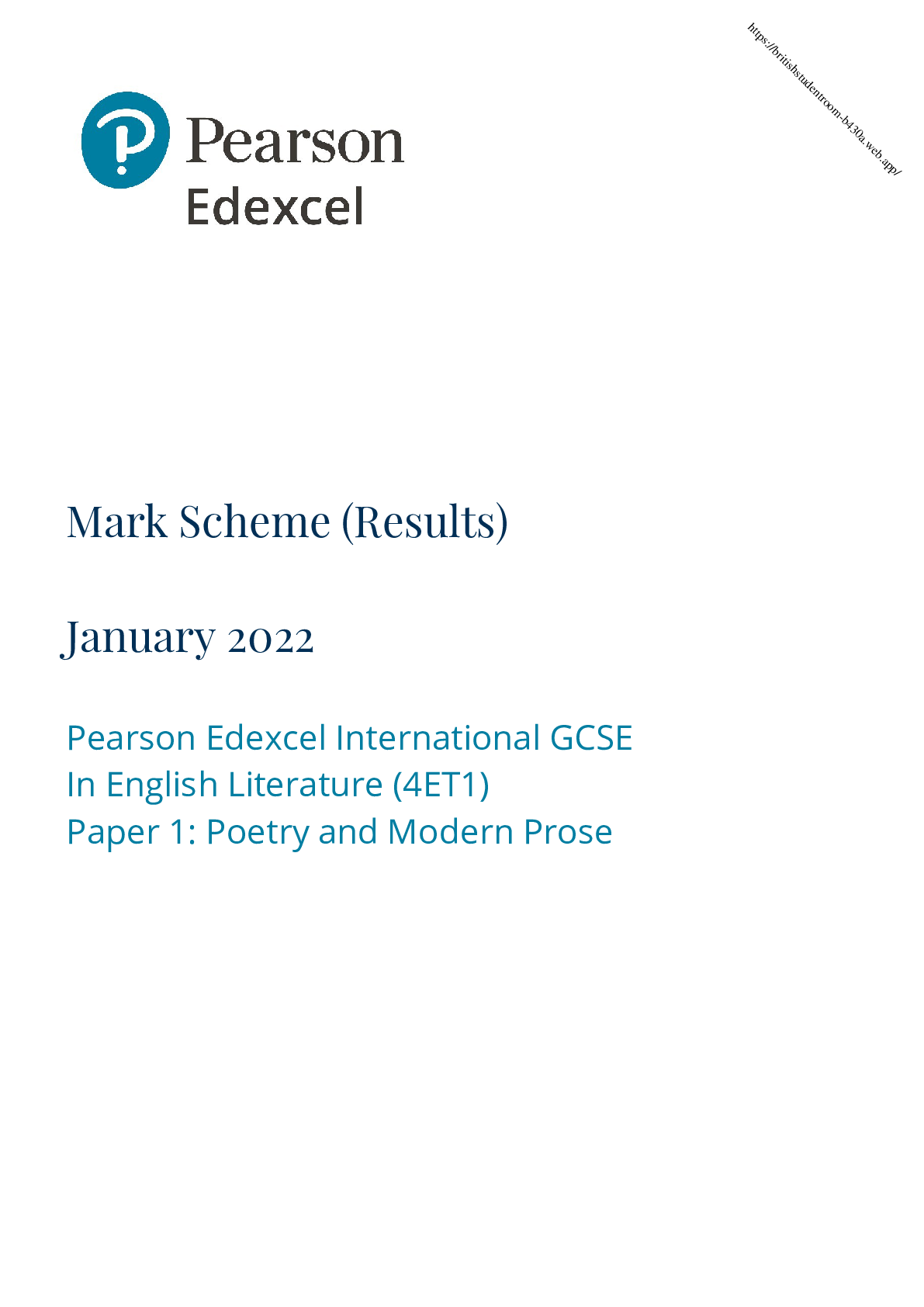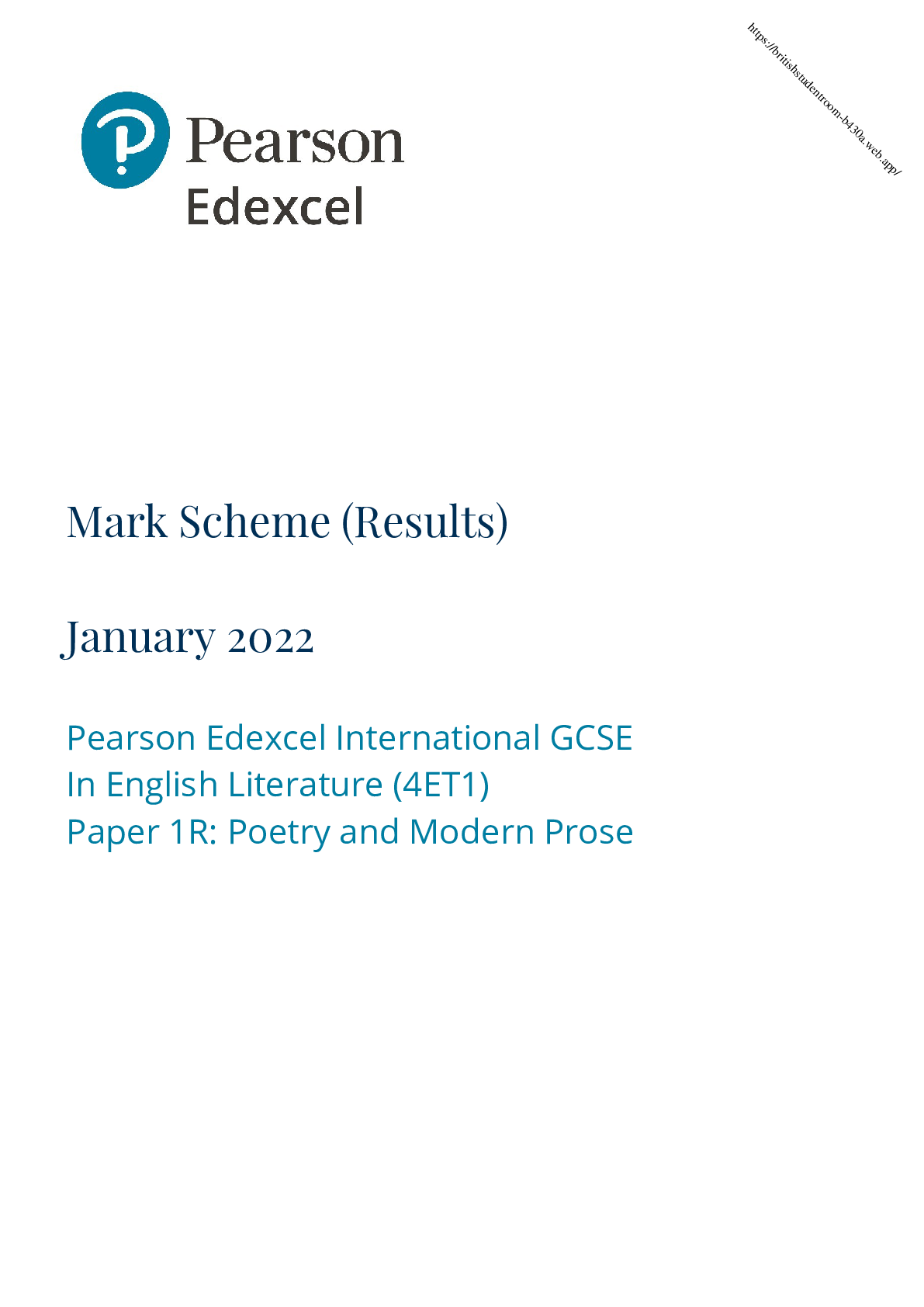English Literature > MARK SCHEME > Mark Scheme (Results) Summer 2022 Pearson Edexcel GCSE in English Literature (1ET0) Paper 2 Option 1 (All)
Mark Scheme (Results) Summer 2022 Pearson Edexcel GCSE in English Literature (1ET0) Paper 2 Option 1: 19th-century Novel
Document Content and Description Below
Mark Scheme (Results) Summer 2022 Pearson Edexcel GCSE in English Literature (1ET0) Paper 2 Option 1: 19th-century Novel 2 Edexcel and BTEC Qualifications Edexcel and BTEC qualificat... ions are awarded by Pearson, the UK’s largest awarding body. We provide a wide range of qualifications including academic, vocational, occupational and specific programmes for employers. For further information visit our qualifications websites at www.edexcel.com or www.btec.co.uk. Alternatively, you can get in touch with us using the details on our contact us page at www.edexcel.com/contactus. Pearson: helping people progress, everywhere Pearson aspires to be the world’s leading learning company. Our aim is to help everyone progress in their lives through education. We believe in every kind of learning, for all kinds of people, wherever they are in the world. We’ve been involved in education for over 150 years, and by working across 70 countries, in 100 languages, we have built an international reputation for our commitment to high standards and raising achievement through innovation in education. Find out more about how we can help you and your students at: www.pearson.com/uk Summer 2022 Question Paper Log Number 71585 Publications Code 1ET0_2N_2206_MS All the material in this publication is copyright © Pearson Education Ltd 2022 3 General Marking Guidance • All candidates must receive the same treatment. Examiners must mark the first candidate in exactly the same way as they mark the last. • Mark schemes should be applied positively. Candidates must be rewarded for what they have shown they can do rather than penalised for omissions. • Examiners should mark according to the mark scheme not according to their perception of where the grade boundaries may lie. • There is no ceiling on achievement. All marks on the mark scheme should be used appropriately. • All the marks on the mark scheme are designed to be awarded. Examiners should always award full marks if deserved, i.e. if the answer matches the mark scheme. Examiners should also be prepared to award zero marks if the candidate’s response is not worthy of credit according to the mark scheme. • Where some judgement is required, mark schemes will provide the principles by which marks will be awarded and exemplification may be limited. • When examiners are in doubt regarding the application of the mark scheme to a candidate’s response, the team leader must be consulted. • Crossed out work should be marked UNLESS the candidate has replaced it with an alternative response. Marking Guidance – Specific • The marking grids have been designed to assess student work holistically. The grids identify the Assessment Objective being targeted by the level descriptors. • When deciding how to reward an answer, examiners should consult both the indicative content and the associated marking grid(s). When using a levels-based mark scheme, the ‘best fit’ approach should be used. • Examiners should first decide which descriptor most closely matches the answer and place it in that level. • The mark awarded within the level will be decided based on the quality of the answer and will be modified according to how securely all bullet points are displayed at that level. • In cases of uneven performance, the points above will still apply. Candidates will be placed in the level that best describes their answer according to the Assessment. Objective described in the level. Marks will be awarded towards the top or bottom of that level depending on how they have evidenced each of the descriptor bullet points. • Indicative content is exactly that – it consists of factual points that candidates are likely to use to construct their answer. It is possible for an answer to be constructed without mentioning some or all of these points, as long as they provide alternative responses to the indicative content that fulfil the requirements of the question. It is the examiner’s responsibility to apply their professional judgment to the candidate’s response in determining if the answer fulfils the requirements of the question. 4 Placing a mark within a level • Examiners should first decide which descriptor most closely matches the answer and place it in that level. The mark awarded within the level will be decided based on the quality of the answer and will be modified according to how securely all bullet points are displayed at that level. • In cases of uneven performance, the points above will still apply. Candidates will be placed in the level that best describes their answer according to the descriptors in that level. Marks will be awarded towards the top or bottom of that level depending on how they have evidenced each of the descriptor bullet points. • If the candidate’s answer meets the requirements fully, markers should be prepared to award full marks within the level. The top mark in the level is used for work that is as good as can realistically be expected within that level. The table below shows the number of raw marks allocated for each question in this mark scheme. Assessment Objectives Total Component AO1 AO2 AO3 AO4 mark Component2: 19th-century Novel Questions 1a to 7a 20 00 0 20 Questions 1b to 7b 20 20 AO1 Read, understand and respond to texts. Students should be able to: ● maintain a critical style and develop an informed personal response ● use textual references, including quotations, to support and illustrate interpretations. AO2 Analyse the language, form and structure used by a writer to create meanings and effects, using relevant subject terminology where appropriate. AO3 Show understanding of the relationships between texts and the contexts in which they were written. AO4 Use a range of vocabulary and sentence structures for clarity, purpose and effect, with accurate spelling and punctuation. 5 Section A – 19th-century Novel Jane Eyre Question Number Indicative Content 1 (a) The indicative content is not prescriptive. Reward responses that explore the ways in which Brontë presents Helen Burns in this extract. Responses may include: • Helen Burns is presented as pragmatic, tolerant, considerate, intelligent and self-deprecating. Her faith in God helps her to endure the harsh treatment that she receives at Lowood • Jane Eyre approaches the girl and learns that her name is Helen Burns. The girls engage in conversation and Jane feels sympathy for Helen. Jane asks Helen a number of questions • Helen tells Jane that she comes from the Scottish borders, but she does not reveal the exact location. Helen hopes to return some day but accepts that ‘nobody can be sure of the future’, demonstrating her pragmatic nature • she is accepting of her situation and values the opportunity of gaining an education. Helen considers it would be a waste to leave Lowood without one, showing her resolve and strength of character • Jane feels that Miss Scatcherd is cruel towards Helen. Helen exclaims that she believes otherwise, ‘Not at all!’, and demonstrates her tolerance when suggesting that the teacher is simply ‘severe’ • Jane is incredulous that Helen is so accepting of her situation. Helen demonstrates endurance and patience. The alliterative ‘great grief’ emphasises Helen’s desire to avoid causing trouble for her relations • Helen’s faith in God is demonstrated when she cites the Bible: ‘the Bible bids us return good for evil’ • she is older and wiser than Jane. She picks up on Jane’s ‘could not bear it’ and repeats how Jane should ‘bear’ the situation that they are both in. The italicised ‘cannot bear’ emphasises Helen’s view that it is ‘weak and silly’ not to accept it • Helen is self-deprecating. She lists her faults: ‘slatternly’, does not keep things in order, ‘careless’, forgets rules, reads when she should not, ‘no method’ • the triplet is used by Helen to describe and juxtapose Miss Scatcherd’s virtues: ‘naturally neat, punctual, and particular’. Reward all valid points. 6 Level Mark Descriptor – Bullets 1 and 2 – AO2 (20 marks) Please see page 4 0 No rewardable material. Level 1 1–4 • The response is simple and the identification of language, form and structure is minimal. • Little evidence of relevant subject terminology. Level 2 5–8 • The response is largely descriptive. There is some comment on the language, form and structure. • Limited use of relevant subject terminology to support examples given. Level 3 9–12 • The response shows an understanding of a range of language, form and structure features and links them to their effect on the reader. • Relevant subject terminology is used to support examples given. Level 4 13–16 • The response is focused and detailed. Analysis of language, form and structure features and their effect on the reader is sustained. • Relevant subject terminology is used accurately and appropriately to develop ideas. Level 5 17–20 • The response is a cohesive evaluation of the interrelationship of language, form and structure and their effect on the reader. • Relevant subject terminology is integrated and [Show More]
Last updated: 1 year ago
Preview 1 out of 32 pages
Instant download
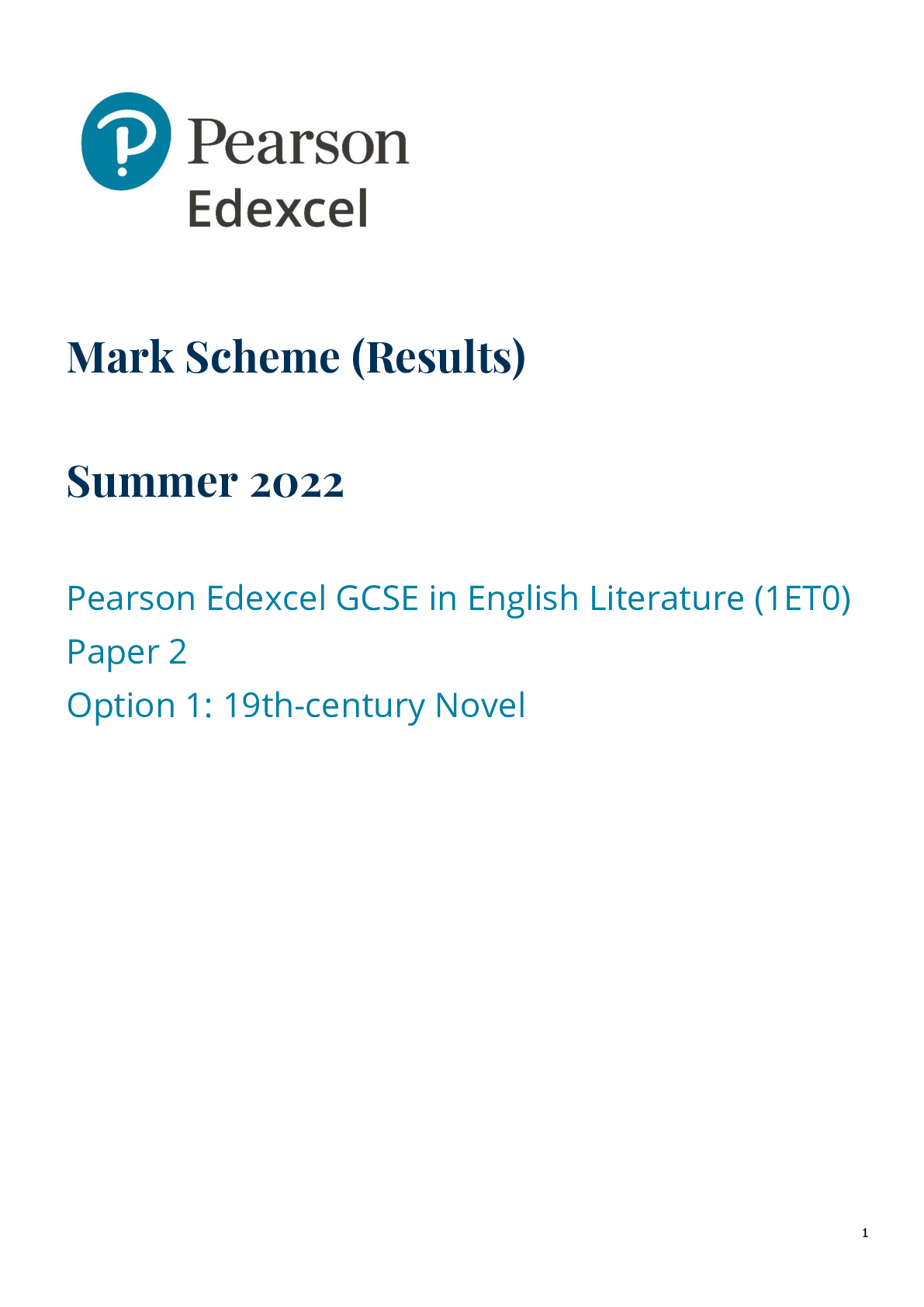
Buy this document to get the full access instantly
Instant Download Access after purchase
Add to cartInstant download
Reviews( 0 )
Document information
Connected school, study & course
About the document
Uploaded On
Apr 03, 2023
Number of pages
32
Written in
Additional information
This document has been written for:
Uploaded
Apr 03, 2023
Downloads
0
Views
104

